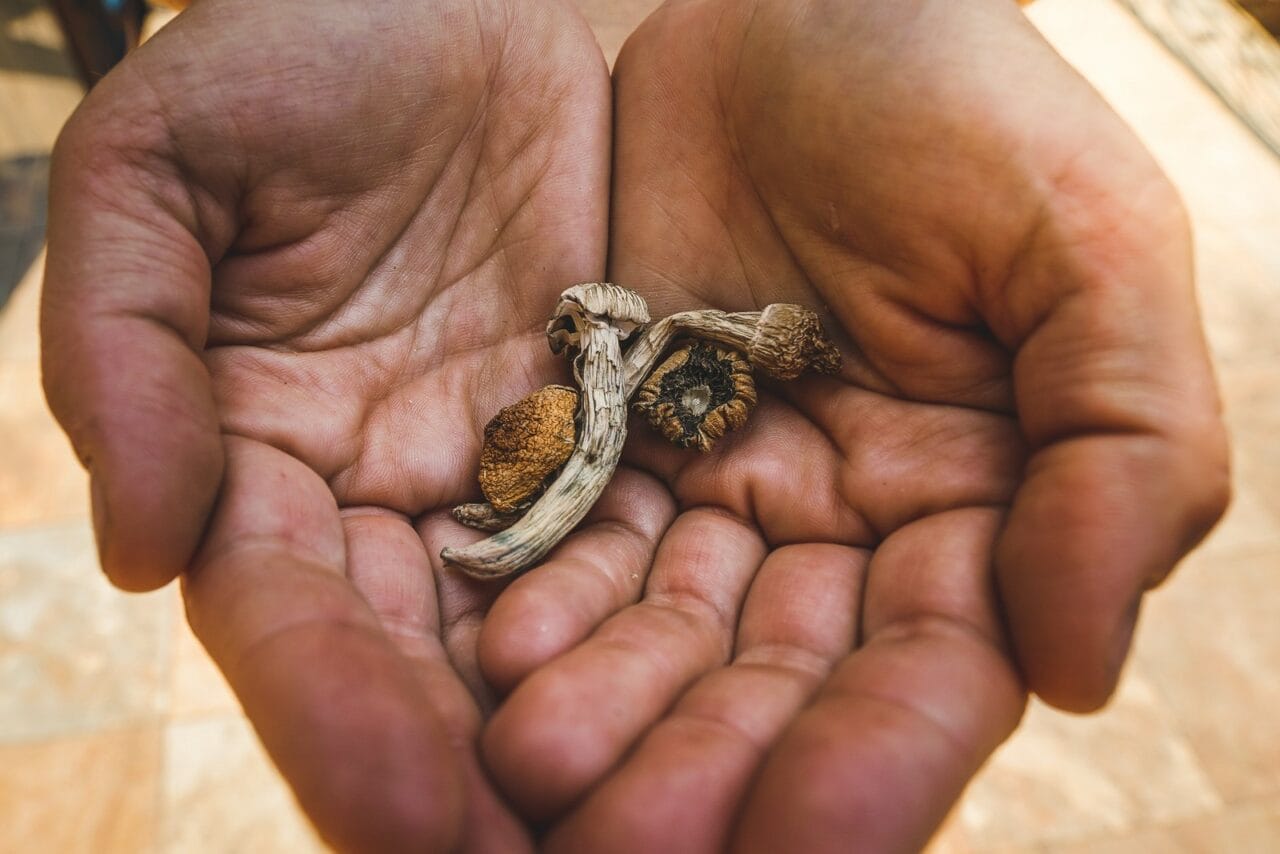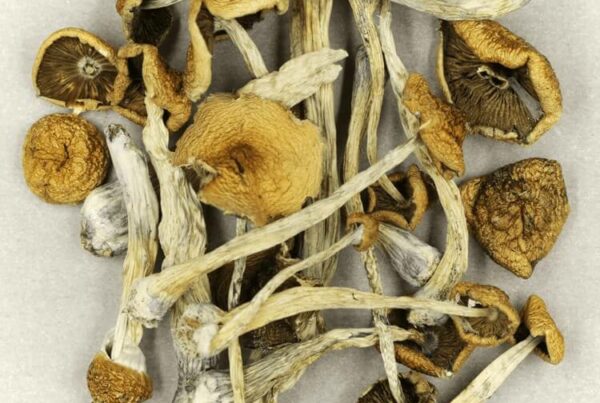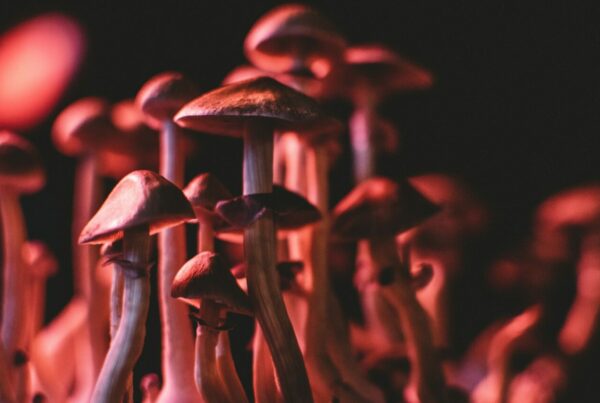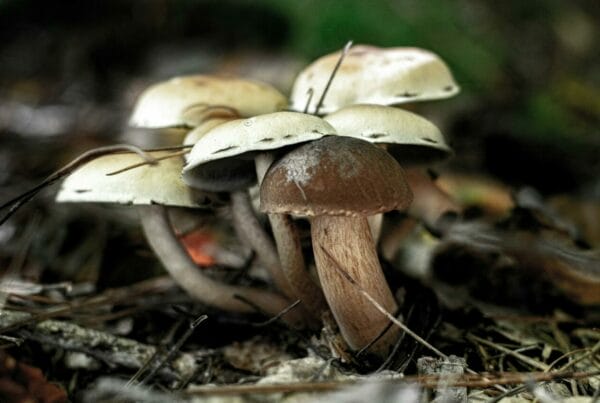Have you heard of dried shrooms and are considering trying them? These popular psychedelics are well-received in the market today, but you might be uncertain if they’re the right fit for you.
If you’re a beginner and unsure about which psychedelic to choose, we’re here to guide you. Let’s explore how dried mushrooms vary from other substances and why they could be an excellent option for your first psychedelic experience.
[toc]Key Insights:
- The active compound in Psilocybe is widely researched for mental health due to its safety, minimal abuse potential, and brief-lasting effects.
- The most common form is dehydrated Psilocybe, which retains potency and extends shelf life.
- Psilocybin stimulates the serotonin 5-HT2A receptor, leading to heightened perception, vibrant imagery, complex hallucinations, and time distortions.
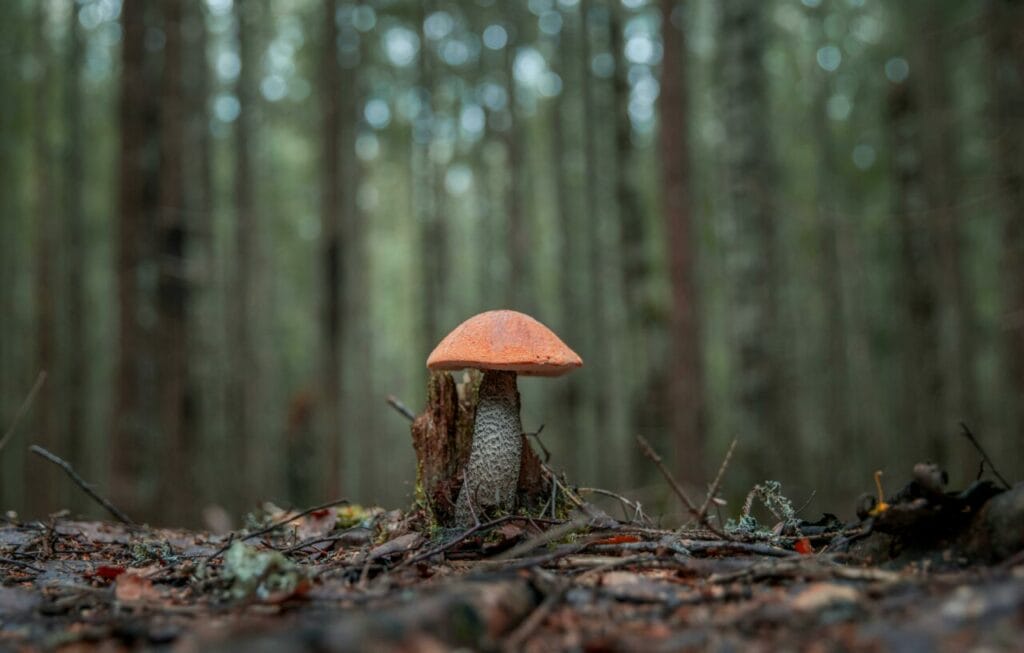
Psilocybin Mushrooms: Delving into the Psychedelic Fungi World
Psilocybin mushrooms contain the psychoactive compounds, psilocybin and psilocin, responsible for the hallucinogenic effects users experience. The most famous species—Psilocybe cubensis—has a light brown cap, dark spots, and a distinct shape. Other species in the Psilocybe genus also produce these compounds.
Some toxic mushrooms with harmful toxins resemble Psilocybe, hence our recommendation against mushroom picking.
In the past, several mushrooms played a significant role in Central American spiritual practices. Presently, their potential in treating mental health disorders, including substance use issues, is being explored by researchers.
Preparation and Preservation: The Dried Variant
The most common form of Psilocybe is the dried variant. Dehydration is essential to preserve potency and extend shelf life. Fresh mushrooms can be dried using a food dehydrator or left on a wire rack in a cool, dry location.
This process is crucial for removing excess
It’s essential to properly dry and store magic mushrooms to prevent moisture from causing mold growth and degrading their active compounds. Once dried, these mushrooms can be stored for future use.
Here is a detailed guide on how to dry and store magic mushrooms effectively:
- Use a suitable food dehydrator or a wire rack to thoroughly dry the mushrooms.
- Store the dried mushrooms in airtight containers to maintain their potency and protect them from excessive moisture.
- Keep the containers in a dry, cool place to preserve their psychoactive properties.
- Avoid exposing the mushrooms to direct sunlight to prevent degradation.
- Regularly inspect the mushrooms for mold or dark spots, which are indicators of spoilage.
How Psilocybe Cubensis Compares with Other Psychedelics
Besides dried mushroom products, various other psychedelic products are available online. These substances have different effects on the body and can be consumed in different ways. Some of these substances are classified as classic hallucinogens, similar to psilocybin.
| Substance | Origin | Physical Effects | Research Indications | Duration |
| Psilocybin | Found naturally in over 200 mushroom species | Perception enhancement, hallucinations, altered time sense | Depression, Anxiety, PTSD, OCD, Cluster headaches, Alzheimer’s disease | 4-6 hours |
| DMT | Occurs naturally in plants like Psychotria viridis | Deep spiritual experiences, visions, auditory hallucinations | Depression, Addiction | 15-30 minutes |
| LSD | Synthetic, first produced by Albert Hofmann in 1938 | Heightened emotions, perception alteration, auditory and visual hallucinations | Depression, Anxiety, Addiction, Cluster headaches, Alzheimer’s disease, Tourette’s syndrome, ADHD | 8-12 hours |
| MDMA | Synthetic, first synthesized by Anton Köllisch in 1912 | Release of serotonin, dopamine, norepinephrine, and possibly oxytocin increases | PTSD, Autism spectrum disorder, Obesity, Narcolepsy, ADHD | 3-6 hours |
| Ketamine | Synthetic, first synthesized by Calvin L. Stevens in 1962 | Anesthetic, high doses induce psychedelic effects | Depression, Bipolar disorder, Anxiety, Suicidal ideation, Addiction, Autism spectrum disorder, Chronic pain, Arthritis, Fibromyalgia | 1-3 effects: |
Deciphering Your Body’s Response
The operational mechanisms of each substance are theoretical and based on observed outcomes. These theories offer insight into how these substances may generate their effects but don’t provide a conclusive understanding of the underlying processes involved.
- Psilocybin: Activates the serotonin 5-HT2A receptor effortlessly, leading to heightened perception, vibrant imagery, complex hallucinations, and temporal distortions. It also prompts alterations in thalamic gating and increased prefrontal cortex activity.
- DMT: Its engagement with serotonin receptors is only part of its overall impact, the full range of which remains undefined. While the serotonin receptor is vital, it can’t entirely account for all DMT effects.
- LSD: It works within the serotonergic system in the Dorsal Raphe, binding to the 5-HT2A receptor as a partial agonist and the 5-HT1A receptor as a full agonist.
- MDMA: Triggers an instant feeling of pleasure by enhancing the release of dopamine and serotonin.
- Ketamine: Its exact mode of action remains unknown. Its antidepressant effect may derive from blocking NMDA receptors on neurons, although selective inhibition of NMDA receptors on GABAergic interneurons and suppression of AMPA receptors might also contribute.
What Impacts Do Psychedelic Mushrooms Have?
The psychological and physical reactions can significantly vary based on dosage, environment, and the user’s mental condition. Common experiences associated with psychedelic mushrooms use include:
- Visual and Auditory Hallucinations: Users may witness patterns, colors, and shapes that aren’t present in reality.
- Distorted Sense of Time: Time might seem to either slow down or speed up.
- Altered Perception: Sensory experiences may intensify or distort.
- Emotional Fluctuations: A wide range of emotions, from happiness to anxiety.
- Spiritual Revelations: Experiences of a spiritual or mystical nature.
- Physical Effects: These may include an increase in heart rate and blood pressure, or feelings of sickness.
Shroom consumption is considered safe when used responsibly. However, without proper preparation, some users may have unpleasant experiences. While experienced users may benefit from higher doses, beginners consuming large amounts might face an adverse “bad trip.”
It’s easy to control your experience with this substance. Choose a calm, quiet environment and have a sober “trip guide” for help.
A Better Choice Than Other Substances
Dried shrooms are often preferred by medical professionals due to their long shelf life and easy dosage. Their shorter duration and adjustable intensity make them a suitable option for those trying psychedelic therapy for the first time. They are also more natural than other synthetic hallucinogens, except for DMT.
Distinguishing the benefits of different compounds can be challenging, as many clinical trials have similar outcomes, notably between LSD and psilocybin. The latter is the most extensively researched psychedelic for mental health issues, mainly due to its robust safety profile, low abuse potential, and short hallucinatory trips.
Health Benefits
- This natural substance may help relieve “cognitive rigidity,” reduce self-defeating thoughts, and encourage self-compassion.
- A 2022 study discovered that a single 25 mg dose lessened depression scores in individuals with treatment-resistant depression. A 2023 study found notable and enduring reductions in depressive symptoms with the combined use of regulated substances and psychotherapy.
- A 2022 clinical trial revealed that psilocybin-assisted psychotherapy significantly reduced the number of heavy drinking days over an eight-month period compared to a placebo.
- A 2017 study published in the American Journal of Drug and Alcohol Abuse noted that two to three doses, along with cognitive behavioural therapy (CBT), enabled 10 out of 15 participants to quit smoking for a year.
- In a 2022 pilot study published in Biological Psychiatry, four out of five patients with anorexia reported an improvement in their eating disorder symptoms after a single dose of shroom with psychotherapy. Two of these patients also noticed reduced anxiety.
- Preparation Phase: This phase includes one or more sessions, each lasting between 1-6 hours, with a facilitator. The sessions aim to address any concerns, establish your goals, and set explicit expectations. They are designed to build trust and create a safe environment.
- Dosing Phase: This phase lasts 5-8 hours. You will be reclining, with an eye mask on, and listening to a pre-selected playlist. A therapist will be with you throughout the experience.
- Integration Phase: This phase includes follow-up meetings designed to help you understand and interpret your experience. These meetings, spread over a few sessions, each last several hours.
Are mushroom products more cost-effective than other substances?
Dried mushrooms are typically less expensive than LSD products. For instance, 3.5 grams of dried mushrooms can be purchased for around $20. Conversely, the cost of LSD in gel tabs varies based on the dosage. For instance, six tabs with a strength of 100 micrograms each could potentially cost about $90.

